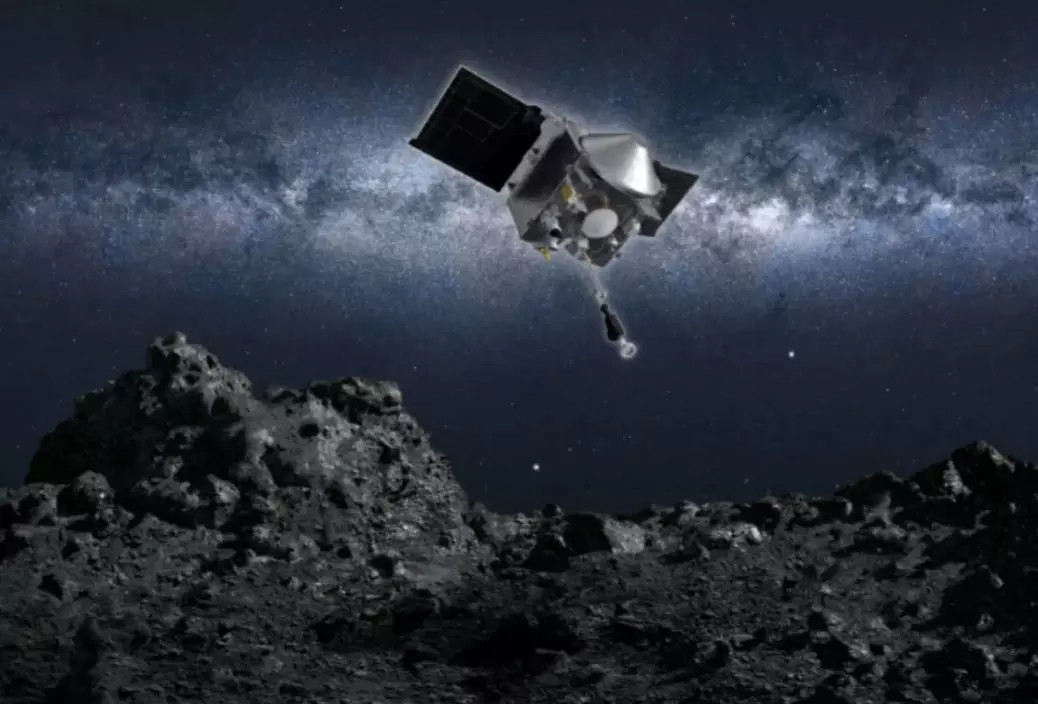NASA's year of firsts: Pushing boundaries in space, science, and technology
NASA's year of firsts: Pushing boundaries in space, science, and technology

As 2024 draws to a close, NASA celebrates a year filled with groundbreaking achievements, marking significant firsts in space exploration, technology, and science. These accomplishments include landing cutting-edge technology on the Moon with the help of an American company, launching an ambitious mission to study Europa, Jupiter's icy moon, celebrating 24 years of human presence aboard the International Space Station (ISS), and unveiling a supersonic quiet aircraft.
In addition to these milestones, NASA shared the stunning visuals of a total lunar eclipse, completed the final flight of its Ingenuity helicopter on Mars, and demonstrated its ability to communicate across deep space—a remarkable technological feat. The agency also tested its next-generation solar sail, made new scientific discoveries with the James Webb Space Telescope, and successfully concluded a year-long Mars simulation on Earth with a dedicated crew. Furthermore, NASA unveiled the latest group of Artemis Generation astronauts, marking another step forward in its Moon and Mars missions.
“In 2024, NASA took giant leaps in exploration, discovery, and inspiration,” said NASA Administrator Bill Nelson. “Through commercial and international partnerships, we are advancing our efforts to lead humanity back to the Moon and onto Mars. We launched new missions to study our solar system and the universe, observed our changing Earth, and explored new possibilities in aviation and space travel.”
The Artemis program, part of NASA’s Moon to Mars exploration strategy, made substantial progress this year. NASA achieved key developments in its first Moon mission in over 50 years and continued planning for deeper exploration of the Moon. The Artemis Accords, signed by 15 countries in 2024, further strengthen international cooperation in space exploration.
To monitor climate change, NASA launched multiple satellites and opened its second Earth Information Center to share vital data with a broader audience. According to its latest Economic Impact Report, NASA contributed $75.6 billion to the U.S. economy, demonstrating the societal value of the agency’s work and the return on investment for taxpayers.
NASA's Preparations for the Moon and Mars: 2024 Milestones
NASA has made significant strides in its preparations for lunar and Mars exploration. Notable achievements include the advancement of Artemis missions, progress on lunar and Mars exploration, and critical infrastructure developments.
Artemis Missions and Lunar Exploration
NASA made significant progress in the Artemis program, which aims to return astronauts to the Moon. This year saw key advancements, such as:
The successful testing of the Space Launch System (SLS) rocket, a critical component of future lunar missions.
The completion of mobile launcher testing and updates to mission timelines for Artemis II and III.
Astronaut training, including sea recovery operations and mission simulations, ensuring readiness for upcoming missions.
NASA’s Commercial Lunar Payload Services (CLPS) initiative achieved its first Moon landing in February, with the Nova-C lander delivering scientific instruments to the lunar surface. The agency also revealed plans for missions to the lunar South Pole by 2027, expanding its CLPS initiative.
Mars Exploration and Ingenuity’s Success
NASA’s Mars exploration efforts continued to advance, including:
The MAVEN spacecraft celebrating 10 years of studying Mars' upper atmosphere.
The successful conclusion of Ingenuity's Mars helicopter mission, which exceeded expectations and flew far beyond the original mission parameters.
Ongoing planning for Mars sample return missions, with NASA reviewing innovative strategies to reduce costs and risks.
Strategic Partnerships and International Collaborations
NASA formed key partnerships with international organizations and private companies to ensure the success of its exploration missions. Notable collaborations include:
Agreements with the United Arab Emirates and Japan for lunar exploration.
Ongoing development of human lunar landers in collaboration with SpaceX and Blue Origin.
The advancement of lunar terrain vehicles and other essential infrastructure to support the Artemis missions.
Critical Infrastructure Developments
To support future missions, NASA has focused on infrastructure investments and testing:
The completion of critical design reviews for the mobile launcher and the SLS rocket core stage.
Testing of RS-25 engines at NASA’s Stennis Space Center, setting the stage for future Artemis missions.
The successful conclusion of the CHAPEA (Crew Health and Performance Exploration Analog) mission, which simulated life on Mars for 378 days, providing valuable data on the physical and psychological challenges of long-duration space travel.
NASA's commitment to advancing space exploration, fostering international cooperation, and driving technological innovation makes 2024 a remarkable year for the agency and for humanity’s future in space.

